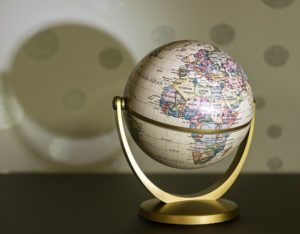by Sabine Schuller
 You can’t lose. Everywhere on the planet, someone is generously lending a hand to their neighbor. Philanthropy can be time, talent, or treasure – it can be 5 rupees or US$5,000,000. There are many resources to help understand where your future donors are and what their philanthropy looks like.
You can’t lose. Everywhere on the planet, someone is generously lending a hand to their neighbor. Philanthropy can be time, talent, or treasure – it can be 5 rupees or US$5,000,000. There are many resources to help understand where your future donors are and what their philanthropy looks like.
Following are four reports and indexes from wealth management firms, a foundation, and an institute that focus on donors and philanthropy around the world, each report using their own special lens.
Coutts | Million Dollar Donors Report
http://philanthropy.coutts.com
Description
This report measures US$1M+ and £1M+ charitable gifts by individuals, foundations, corporations in the US, Middle East (GCC), and UK or to NGOs based in those countries.
Why this report is different
- Distinguishes between international v. overseas recipient organizations:
- International: NGO that works primarily outside of its home country. A US$1.5 M gift to World Vision (Washington, USA) that will benefit children in Burundi is described as “international” in this report.
- Overseas: NGO recipient based outside of donor’s home country, regardless of NGO’s geographical scope. A Saudi Arabian foundation donates US$3M to an Indonesian NGO that only works in Indonesia.
- Provides donor biographies describing giving philosophy such as Abdulaziz Al Ghurair of the Abdulla Al Ghuarair Foundation for Education
- The report tracks US$1M+ gifts from US donors since 2000; £1M+ since 2008.
Click here to read the report evaluation from the Helen Brown Group.
Hudson Institute’s Center for Global Prosperity | Index of Global Philanthropy and Remittances 2016
https://www.hudson.org/policycenters/13-center-for-global-prosperity
Description
This index measures giving from developed to developing countries and emerging to developing countries. Giving includes government, foundations, private volunteer organizations, remittances, volunteer time, student financial aid, remittances.
Why this report is different
It focuses on an entire population’s giving rather than a few wealthy individuals. It’s definition of giving expands generally understood definition of donors and giving. Review the Methodology section to understand how they estimated and calculated figures. It also includes 11 emerging countries’ giving to developing countries. The report also includes case studies of international giving from countries other than the US. It posits that based on their parameters of donations, 84% of giving is from private financial flows, only 16% from governmental aid.
Charities Aid Foundation | World Giving Index 2016
https://www.cafonline.org/about-us/publications/2016-publications/caf-world-giving-index-2016
Description: This index measures and ranks self-reported giving by the general population of 140 countries in money, time, and helping strangers by countries and continents.
Why this report is different
Its data source is Gallup’s annual World View World Poll of self-reported data that covers 140 countries, about 1,000 people each. The index expands the definition of giving to not just monetary donations, but also volunteering time to a charitable organization and helping a stranger. The Index ranks countries and continents by those individual categories and total scores noting significant changes and the possible reasons. There is a special analysis of the top scoring countries, some focusing on giving by age and gender, continent, or economic status (developed, in transition, developing).
BNP Paribas | Individual Philanthropy Index 2016
https://www.forbes.com/forbesinsights/2016_BNP_philanthropy_index/index.html
Description
This index measures and ranks the US, Europe, Asia, Middle East by wealthy individuals’ self-reported charitable giving, promoting a charity/cause, and measuring their charitable donations’ cost-effectiveness.
Why this report is different
Its data source is people with US$5M+ in investable assets. It compares the United States to three other larger geographic areas. Like the CAF and the Hudson Institute’s Indexes, it expands giving. It is the only resource to include how wealthy donors promote and evaluate their philanthropic causes as part of their index. It also includes comments from well-off individuals worldwide that explain their philanthropy. It sees future NGO trends mirroring business practices by evaluating philanthropic efforts with data and analytics, emerging multiple giving sources (e.g. impact investing), and philanthropy acting more like start up entrepreneurs.
Reviewing the Big Picture
Sometimes it’s good to take a step back from under the tree and look at the forest. In addition to the important work of evaluating whether that one donor is ready, willing, and able to support your organization, it’s also useful to go back to the basics and review your organization’s overall strategy.
Your international fundraising efforts might have started in Hong Kong 20 years ago because there was a sharp increase in students from that region. Is that still true? Are there additional neighboring countries that could now participate? If you’re just starting your global outreach, which continent, much less which country, do you pick?
The reviews in this article should help you make the best use of the information available to you.
For more resources, click the icons below and login to the Resource Collections to download a handy reference sheet with a side-by-side comparison of the four reports as well as a link collection of global wealth and philanthropy reports.
About Guest Blogger
Sabine Schuller, MLIS works at The Rotary Foundation, a volunteer organization of professional and business leaders that initiates humanitarian projects worldwide. As a donor researcher, she identifies and analyzes donors around the globe. She was also a program officer for Rotary, coaching grant applicants in Latin America, Europe, and North America. Sabine’s first experience in the nonprofit world was at Northwestern University. She developed industry analyses for new commercial opportunities at an international business development center. Sabine is a proud member of the Illinois donor research chapter APRA-IL and also supports her local business librarian association, SLA-IL. Connect with her on LinkedIn.

